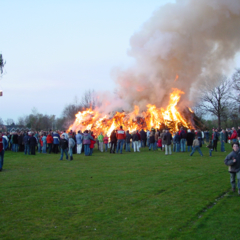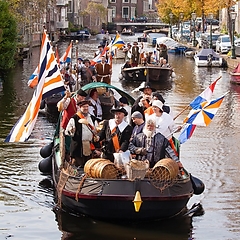At Mid-Lent Sunday white, crescent-shaped rolls (krombroodjes), baked by local bakers, are blessed in church in the morning, in the presence of the banner of the Committee. After mass everyone prepares for the procession, with several cultural societies from Sittard, to the Kollenberg hill. At the end of the procession the Committee is seated in a covered wagon, with the guest of honour and after them the spectators join in. After arrival 6000 krombroodjes are thrown to the children who gathered. For the youngest and for those who are unable to climb the hill, rolls are scattered at the foot of the hill too. Every year the Committee invites another guest of honour to help scatter the krombroodjes. Afterwards a small-scale family party takes place with music and games for the children at the foot of the Kollenberg.


